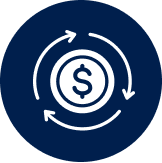Understanding superannuation and how it works will assist you in growing your retirement savings. Remember that, money used to invest in a superannuation fund is actually your own money. You’re forgoing about 10% of your earnings in the hope that this will grow overtime to fund your retirement. If that is the case, then isn’t it prudent that you take more interest in your superannuation and how it’s being managed and invested?
SUPERANNUATION & SMSF ADVICE

It’s never too early or late to start thinking about superannuation

What is Super?
Super is a tax structure and it’s a powerful vehicle to accumulate wealth for your long-term retirement income needs. When used appropriately, your money in that structure can benefit from considerable tax concessions which ultimately will help you grow your retirement savings. It is important to maximise the use of your super to ensure a healthy income to fund your lifestyle when you retire.
How does Superannuation work?
The superannuation system allows you to pool funds together with other members. The funds are then invested professionally into various asset classes such as Cash, Bonds, Property, Australian and International Shares. Although superannuation is your own money, there’re strict rules around how you can access this money and when you can access the money. Remember, the sole purpose of superannuation is to provide you with a retirement income. Anything outside this sole purpose must meet very strict guidelines before you can access your funds.
Types of Superannuation funds
To understand how super works, you first need to understand the different main types of superannuation. There’re several sub categories of superannuation funds. However, the main types of super funds are;

Retail funds
These are large superannuation funds usually owned by large corporations such as investment firms and banks. They’re open to the public to join and usually have shareholders involved. Any profits made are distributed to shareholders. Public offer funds can be applied for directly or through financial advisers.

Industry funds
Industry funds are usually large funds owned by a specific industry and run for members of the said industry. Many of these funds are trade union-based and are typically not-for-profit. Profits may be returned to members. Since the introduction of choice of fund rules in 2005, the industry super funds have been more opened to the public and most of them accept members from outside the specific industry they represent.

Public Sector funds
These funds existed for federal and state government employees. These funds are generally defined-benefit schemes. These schemes are no longer offered by the government however, members of the scheme continue to retain their entitlements of the fund. If you have a defined-benefit super fund, it is highly imperative that you seek advice from a qualified adviser before making any decisions on the scheme.

Self-Managed Super funds (SMSF)
These are privately owned funds, usually made up of up to 4 members. This type of super is regulated by the Australian Taxation Office (ATO). All members must be trustees of the fund. SMSFs operate under the same rules as other superannuation funds – in that, they exist to provide for the retirement benefits of the member(s). The reason people choose to have SMSFs could be the level of control it provides. As Trustees of the fund, you exercise a great deal of investment control, within the rules of superannuation. You must understand that this level of control comes with a higher expectation of responsibility. And although you may seek help in managing your SMSF from other qualified professionals such as Financial Advisers and Accountants, you’re still responsible for any investment decisions made within the fund. Self-managed super funds can be an expensive structure to manage and it is advised to have a considerably large balance to ensure it is a worthwhile exercise.
How is my super invested?
Once you contribute your money into super, you can access a different number of investments including, cash, term deposits, fixed income instruments, bonds, property and shares. These different asset classes carry different levels of risks and to that end, different levels of returns. It is important to understand how these different risk levels blend together to achieve your overall outcomes. Investing in either one on their own, a combination of all or some of them will depend on your risk tolerance and appetite as well as which stage in life you’re in.
Why should I care about super?
Assuming you want a net income of $100,000 pa when you retire, you must generate about $140,000 pa to allow for tax of almost $40,000. Without using the superannuation environment, you must accumulate about $2.8M* by the time you retire to generate $100,000 net income. By using the superannuation environment, you may need to only accumulate $2M*. The reason being that, superannuation is the most tax-efficient vehicle you may use to accumulate wealth for retirement. Under current superannuation rules, any income received from super at age 60 and over is received as a tax-free income. This is a considerable amount of savings on your retirement income. It is important to start accumulating wealth early. By starting early and making small contributions into superannuation, you’ll benefit from the effects of compounding and time. Over your working life, your small contributions could mean a significant nest egg when you reach retirement age.




